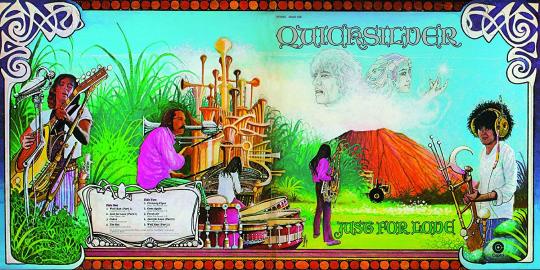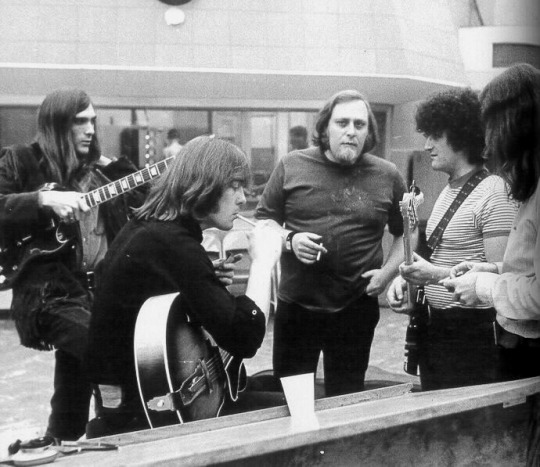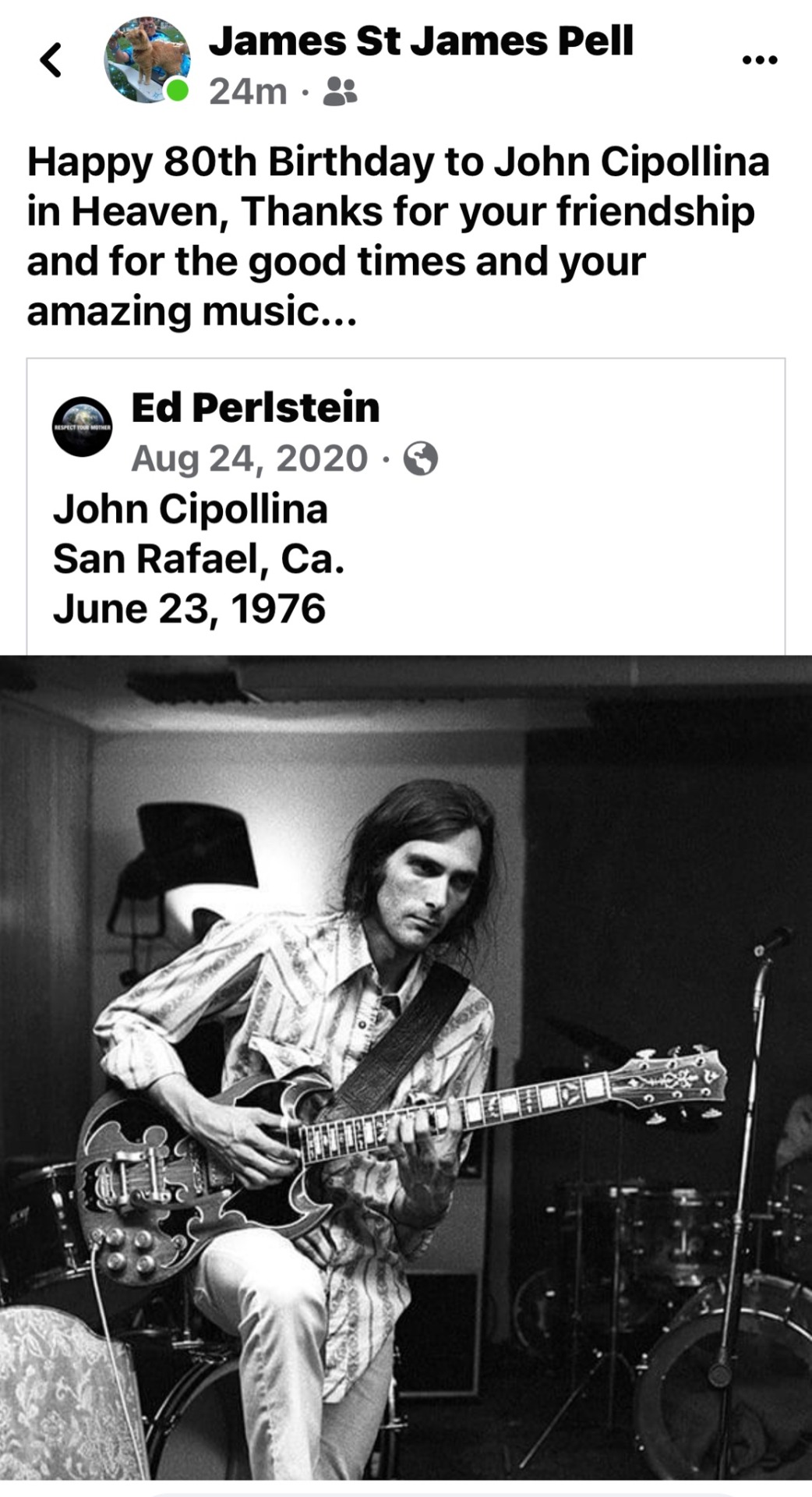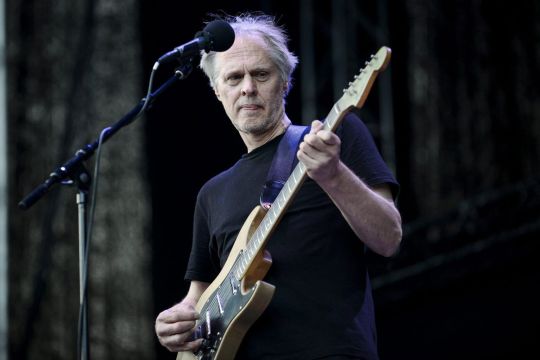#John Cipollina
Text

#quicksilver messenger service#dino valenti#just for love#fresh air#gary duncan#john cipollina#nicky hopkins#david freiberg
15 notes
·
View notes
Text
youtube
Stand By Me
And I bring to you, darling, all my love
My hand to hold lest you fall my love
There are so many things, baby, that we could do
And so many ways, 'cause I love you, I love you
Those gray clouds make my baby blue
Oh, but soon those clouds will all fade from view
There are so many ways, baby, that we could be
And so many ways that I love you, won't you love me?
Stand by me, baby
Stand by me
Stand by me, baby
Stand by me, my love
Summertime is sure to come
And summer days bring the summer sun
There are so many days that are yet to be
And so many ways that I will love you to love me
So
Stand by me, baby
Stand by me
Stand by me, baby
Stand by me, my love
Stand...
Come on and stand by me
Stand by me, baby
Stand by me, my love
Stand by me, stand by me
Stand by me, stand by me now Stand by me, baby
Stand by me, my love
Stand...
#Youtube#quicksilver messenger service#stand by me#Special song for me#i love this song#john cipollina#san francisco
8 notes
·
View notes
Text
Quicksilver Messenger Service - Fresh Air - 12/28/1975 - Winterland - San Francisco -
youtube
#quicksilver messenger service#fresh air#dino valenti#gary duncan#john cipollina#greg elmore#michael lewis#skip olsen#psychedelic rock#acid rock#live 1975#winterland#san francisco#Youtube
2 notes
·
View notes
Photo

Quicksilver Messenger Service - John Cipollina
22 notes
·
View notes
Photo

2 notes
·
View notes
Text
youtube
Escuché hace años "Sabicas Rock Encounter With Joe Beck" pero lo recordaba mal, como un maridaje que no acababa de cuajar en algo satisfactorio. Ahora lo he vuelto a escuchar, en ejemplar tocadito, y creo que buena parte de él funciona muy bien. He leído que el GRAN Sabicas dijo en alguna ocasión que el disco se grabó en 1966 y no vio la luz hasta cuatro años más tarde, y algunas fuentes lo fechan en ese año, pero yo no lo creo así. Estoy de acuerdo con los que piensan que este disco está grabado a finales de los sesenta o en el propio 1970 por su sonoridad eléctrica y sicodélica, por su vibra cargada de fuzz y wah wah. En 1966 ni en broma. Arriba se puede escuchar ese más que interesante disco completo.
El maestro de la guitarra flamenca debió tener un despiste o le falló la memoria. Es curioso, porque leo que Sabicas despreciaba este disco, y parece ser que el gran productor de flamenco y derivados Ricardo Pachón contaba que Sabicas incluso se negó a cobrar los derechos de autor correspondientes. A lo mejor participó por una cuestión monetaria, no lo sé, lo que sí sé es que tanto Sabicas como Manitas de Plata fueron guitarristas muy apreciados por colegas del rock ácido de la Costa Oeste, como John Cipollina de Quicksilver Messenger Service (Montoya es Ramón Montoya y "Paco" podría ser una referencia a un primerizo Paco de Lucía).
Además de Sabicas y Joe Beck, en el LP tocó el bajo un tal Anthony Levin (se supone que el Tony Levin de King Crimson, no está bien documentado), Donald McDonald la batería, Warren Bernhardt el órgano, Diego Castellón la guitarra rítmica española y Domingo Alvarado cantó. A lo que hay que añadir un zapateado que algunos indican que es el mismo que Queti Clavijo bailó en "Abajo el Telón", la película de Cantinflas de 1955, y que hace unos meses @karime2701 atribuyó a su tía Carmen Algaba Amaya “la Chuny“. Bailase quién lo bailase, no tuvieron a bien incluirla en créditos.
Más comentarios interesantes y avispados: "The Bass player is Tony Levin, who began his recording career in 1970. So this album couldn't be record 4 years before :)". p4uloren4to
"I knew the producer, Harvey Cowan. We were introduced in the summer of 1970. He was very excited that this record, which was his idea, was about to be released. So, 1970". PlushToons
"I found this gem searching old recordings of the master Sabicas. What was my surprise when I found Sabicas experimenting jaja (laughing in Spanish), is this the same guy that I remember criticizing Paco's experiments and fusion? Just incredible, but imposible to find in CD or streaming (just here). If this is a 1966 record I would be very impressed because I can see a clear influence of the great Hendrix. The album is from later or Joe Beck was Hendrix teacher, jaja just kidding". espinozagaleas
Merece mucho la pena ver el vídeo de abajo en el que el enorme Sabicas, gitano de Pamplona, explica estupendamente como se inició en el mundo del flamenco cuando sólo era un niño.
youtube
1 note
·
View note
Text

#John cipollina#pgoeltz#bitterrootvalley#montana#youtube#scvwd#music#gratefuldead#catflinger#flowers#valleywater scvwd
0 notes
Audio
Barry Melton - Guitar, Vocals
John Cipollina - Guitar, Vocals
Peter Albin - Bass, Vocals
Spencer Dryden - Drums
Stu Blank (Guest) - Keyboards
#The Barry The Fish Melton Band#John Cipollina#Mona#Live 1984#Barry Melton#Spencer Dryden#Peter Albin
1 note
·
View note
Video
youtube
Huey Lewis & The News - Sports [FULL ALBUM]
#youtube#huey lewis and the news#sports#sports album#huey lewis#johnny colla#chris cipollina#bill gibson#sean hopper#john mcfee#rock#pop rock#blue-eyed soul#new wave#rhythm and blues#roots rock#music#music is love#music is religion#music is life#full album#music album#80s#80s music#raining music
3 notes
·
View notes
Text

Michael Bloomfield and Carlos Santana at the last week of the Fillmore, San Francisco, 1971.
Photo : Jim Marshall.
The closing of the Fillmore West brought out hundreds of San Francisco fans for a days-long celebration of the ballroom's legacy as a historic purveyor of Sixties rock 'n' roll. Bill Graham's famed venue could no longer support the ever-increasing fees charged by the national acts he presented, and the promoter had no choice but to close down. The revelry culminated in an evening of jams on July 4, 1971, and one featured John Cipollina, Carlos Santana and Michael Bloomfield. The show was heard live over KSFX and this file comes from that broadcast.
#rock photography#Jim Marshall#Michael Bloomfield#Carlos Santana#Fillmore West#1971#1970s#rock history
106 notes
·
View notes
Text
When your mind divides you from your heart
You get to believing we're apart
Illusions of division come from doubt and from suspicion
And i'm wishing in my soul
They'd never start.
Flute song in the night- a distant train
Sounds of loneliness are all the same
But when the tears have left your eyes you may come to realize
No matter what the changes??
No matter where you're bound or where you've been
There's nothing left to lose or left to win
But in or out of season when there's something left is pleasing
Then you need no other reason
To give in.
All you know [?] is what you feel
When all your secrets are revealed
And when your heart is willing then the spaces will start filling in
The fullness of the hope [?]
I hear.
#quicksilver messenger service#john cipollina#Flute song#Precious songs#Poetical#lyrics#Spotify#70s#san francisco#🧡#Hope#truth#beautiful#Wise#The fullness of the hope
6 notes
·
View notes
Text
Quicksilver Messenger Service - Mona - 8/15/1969 - Sonoma State College -
youtube
#quicksilver messenger service#mona#bo diddley#cover#gary duncan#john cipollina#dino valenti#david freiberg#greg elmore#psychedelic rock#acid rock#live 1969#sonoma state college#sonoma county#Youtube
1 note
·
View note
Text


My first movie
‘68. With John Cipollina, Steve Kimock, Greg Anton, and a buncha other old farts.
6 notes
·
View notes
Text

On this day, 39 years ago in 1984, the Marin Senior Services and Berkeley Creative Living Center presented the Legendary “DINOSAURS” playing this one night only concert at the Marin Civic Auditorium.
The "San Francisco Sound" band featured Barry Melton of Country Joe & the Fish , Peter Albin from Big Brother & the Holding Company, Robert Hunter from the Grateful Dead, John Cipollina from QuickSilver Messenger Service and Spencer Dryden from Jefferson Airplane! Awesome light show as always was provided by San Francisco Light Works.
This BEAUTIFUL multicolored psychedelic Dino Clad poster was done by none other than Big Five master poster artist Alton Kelley and is truly just Over the Top…. even if he did misspell San Francisco is on this poster!😝 He did most of the fantastic posters for the band while they were together.
🦕🦖Jurassically Approved by
👉🏼Professor Poster 🎩
5 notes
·
View notes
Photo

As the leader of the New York band Television, Tom Verlaine, who has died aged 73, was a key figure in the coterie of musicians – Blondie, Talking Heads, the Ramones, the Patti Smith Group – who made downtown Manhattan a laboratory of new sounds and new styles in the mid-1970s. Although each of those groups pursued a very different musical path, together their impact would shape what became known as the punk movement, while Television’s debut LP, Marquee Moon, released in 1977, would secure a place among the most admired and enduringly influential albums of its era.
In Smith’s recent publication, A Book of Days, she chooses a photograph from 1974 in which she and Verlaine, then lovers and occasional collaborators, are holding hands in a tableau of sweetly defiant thrift-store chic: a flimsy child-bride’s gown for her, a patchwork leather jerkin for him. But among the artfully distressed apparel, defiant haircuts and painfully skinny silhouettes of their milieu, none of those serving apprenticeships in CBGBs, Max’s Kansas City and other New York clubs showed more concern for the music itself than Verlaine.
“Attitude,” he once said, “will only take you so far, which for me is never far enough.” Instead the career of the visionary singer, songwriter and guitarist, including solo albums and appearances as well as various Television reunions, seemed to represent a constant quest for the perfect blend of musical eloquence and some form of spiritual elevation.
Fittingly for a man who appropriated his stage name from a great French symbolist poet, Verlaine wrote striking lyrics, such as the opening lines of Marquee Moon: “I remember how the darkness doubled / I recall lightning struck itself.” In another early song, Venus, he sang of how “Broadway looked so medieval” – a description both improbable and indelibly perceptive.
But it was his exploratory guitar solos that spoke of his early interest in, and deep knowledge of, the avant-garde jazz of the 1960s. Somehow he managed to find a language midway between the speaking-in-tongues improvisations of the saxophonists John Coltrane and Albert Ayler and the more functional styles of such rock’n’roll, R&B and surf-rock guitarists as James Burton, Steve Cropper and Dick Dale, as well as the expansive psychedelic guitar improvisations of Jerry Garcia and John Cipollina, and to make the result match his own era.
Verlaine’s tightly wound stage presence was compelling, but his personality – his cool reserve, fugitive manner and inherent suspicion of others’ motives – made him a figure of mystery, and worked against his chances of the mainstream success to which, in any case, he never seemed committed.
The son of Lillian and Victor Miller, he was born in Morriston, New Jersey, into a middle-class family who moved to Wilmington, Delaware, when he was six years old. After classical piano lessons, he switched to saxophone upon discovering jazz and then took up the guitar. At Sanford, a private school in Hockassin, Delaware, where he was a day pupil, he met a boarder from Kentucky named Richard Meyers, with whom he bonded over a love of poetry and a mutual desire to escape the confines of the establishment in which they found themselves. The first attempt ended with both being brought back after being arrested in Alabama for setting a building on fire.
They had made their separate ways to New York by 1971, where they teamed up again on the Lower East Side, changed their names to Tom Verlaine and Richard Hell, scuffled for work and wrote poetry together under the nom-de-plume “Theresa Stern”. But Verlaine, working as a clerk at the Strand bookstore in the East Village, was determined to form a band. He taught Hell the rudiments of playing the bass guitar and together with the drummer Billy Ficca they performed as the Neon Boys before adding another guitarist, Richard Lloyd, and changing their name to Television in 1974.
Verlaine’s songs, the compositions of Hell (including the anthemic Blank Generation) and the soaring interplay between the two lead guitarists quickly earned them a following among New York’s scene makers. Endorsements came from David Bowie and Nicholas Ray, the director of Rebel Without a Cause, whose crisp epithet – “Four cats with a passion” – appeared on their promotional material. Smith, then beginning her rise to prominence, was another early supporter, and Verlaine played on her first single, a version of Hey Joe, in 1974.
Richard Hell, whose spiky hair and ripped T-shirts would inspire Malcolm McLaren’s styling of the Sex Pistols, had already been sacked by Verlaine on the grounds of heroin-induced unreliability by the time Television made their first single. A Verlaine song called Little Johnny Jewel, it was released in 1975 on a label created by their patron, Terry Ork. The following year they signed a deal with Elektra Records and began work on Marquee Moon. The album was co-produced by the studio engineer Andy Johns, who had worked with the Rolling Stones, Free and Led Zeppelin, and who helped Verlaine achieve the clarity of sound for which he was searching.
If the album’s sales were disappointing by the standards of the biggest rock bands of the time, their music was warmly received by the rock press in the US and Europe, and by audiences on their first tour of the UK, with Blondie as their support act. A second album, Adventure, made less impact and the band dissolved in 1978 after disagreements between Verlaine and Lloyd.
Verlaine’s eponymous first solo album was released in 1979, followed two years later by Dreamtime and then by several others, including Cover, completed in 1984 while he was briefly living in London. Two albums of instrumental pieces, Warm and Cool (1992) and Around (2006), showed his gift for creating tone poems inspired by film noir. In 1995 he appeared as a guest with Smith’s band on a US tour with Bob Dylan.
Television briefly reformed in 1992 to release a new self-titled album of the highest quality and toured occasionally both before and after the second departure of Lloyd, who was replaced from 2007 by Jimmy Rip. Their last appearances came in 2013.
🔔 Tom Verlaine (Thomas Miller), guitarist, singer and songwriter, born 13 December 1949; died 28 January 2023
Daily inspiration. Discover more photos at http://justforbooks.tumblr.com
15 notes
·
View notes
